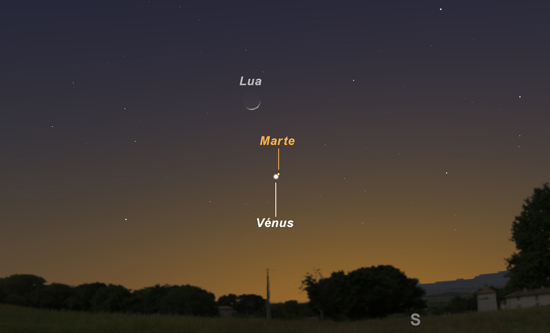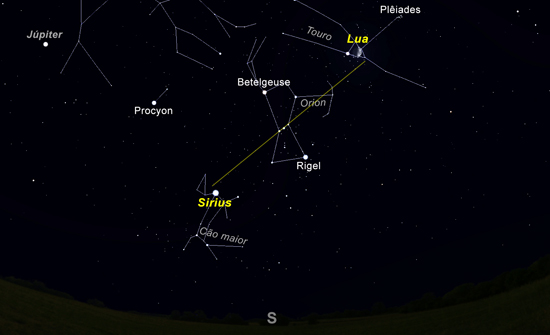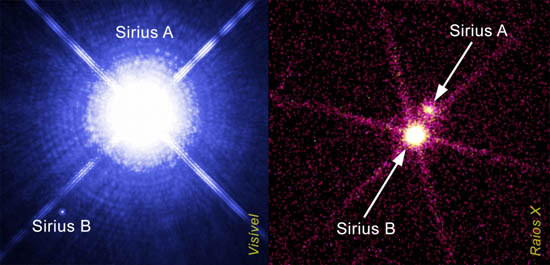 In February, all planets visible to the naked eye will be present in the night sky. At sunset, in the west, we can see Venus and Mars, while in the east we will see Jupiter at dusk, Saturn around 3 am, and Mercury at dawn.
In February, all planets visible to the naked eye will be present in the night sky. At sunset, in the west, we can see Venus and Mars, while in the east we will see Jupiter at dusk, Saturn around 3 am, and Mercury at dawn.
It is with the Full Moon very close to the planet Jupiter, on the 3rd, that our February 2015 sky trip begins. The next day, our satellite will pass at about 6 degrees from the planet.
On day 6, the opposition of Jupiter will occur, with the planet appearing diametrically opposite the Sun in the sky. That will be the day when Jupiter will be brightest, all year round.
On the 12th, the Moon will reach the waning quarter phase, and the next day it will pass at about 2 degrees of Saturn, with both stars rising around 2:30 am.
The dawn of the 17th will bring with it a very thin Moon (the New Moon will be the next day), almost glued to the planet Mercury.
However, the Sun's brightness will begin to overshadow these two stars when they are still very low on the horizon. Only the most attentive, who at 7 am facing east and with the horizon completely clear, will be able to see this combination.

On the 20th, a very thin crescent of the Moon will be separated by only 3 degrees from the planets Mars and Venus. Look for this trio at dusk, as they will set around 20:30 pm. The two planets will be in conjunction the next day, passing only half a degree apart in the sky. On that day, the Moon will be 10 degrees away from both of them.
On the 25th, the Moon reaches the quarter crescent. And on that night, if you draw an imaginary straight line that passes through the 3 stars of the Orion belt (known among us as the 3 Marias), at the same distance from them, but at opposite ends, you will find the Moon and Sirius, the brightest star in the sky at night.
But Sirius is actually a binary system. Sirius A is a blue star, with about twice the mass and temperature (almost 10 degrees) of the Sun. Sirius B became a white dwarf about 120 million years ago, a star with a mass almost equal to that of the Sun. Sun, but compacted to practically the size of Earth.
This will be the fate of our own Sun, but only 5 billion years from now.

Sirius A and B orbit around each other at a distance similar to Uranus's from the Sun, but as they lie about 8,6 light-years apart (Sirius is the fifth closest star to us, other than the Sun) appear in our sky as a single, very bright, bluish hue.
But although “A” is much brighter than “B” in the visible band, in X-rays the roles are reversed, with Sirius B outshining much more than its larger companion.
Good observations.
Author Ricardo Cardoso Reis (CAUP)
Science in the Regional Press – Ciência Viva
Picture's description:
Figure 1: The Moon, above Mars and Venus, around 18:45 pm on February 21st. The separation between the two planets is only half a degree.
(Image: Ricardo Cardoso Reis/Stellarium)
Figure 2: The south-facing sky at 20:00 on the 25th of February. The yellow line is aligned with the “3 marias”, the stars of the belt of Orion.
(Image: Ricardo Cardoso Reis/Stellarium)
Figure 3: Sirius A and B, as seen by the Hubble Space Telescope in visible (left) and Chandra X-ray telescope (right).
(Visible image: NASA/ESA/H. Bond (STScI)/M. Barstow (U.Leicester) ; X-ray image: NASA/SAO/CXC)


















Comments